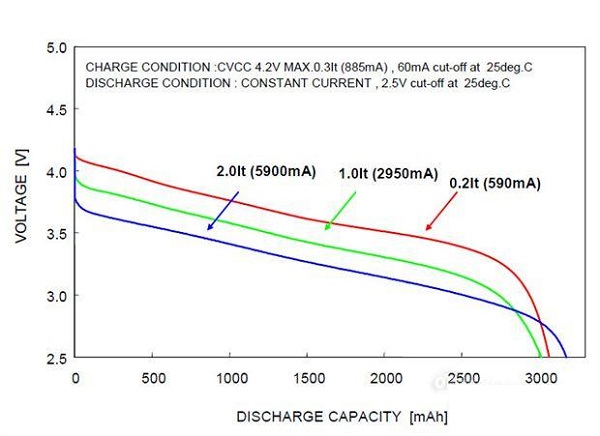What is an Amp hour? Ah, or Amp hour, is a vital metric in lithium-ion batteries, delineating their capacity and operational capabilities. In this article, we explore the essence of Ah and its pivotal role in understanding and calculating battery performance.

Part 1. What is an amp or amp hour?
An Amp, short for ampere, is a unit of electrical current measurement. It represents the flow rate of electric charge carriers in a circuit. It tells us how much electricity flows through a wire or conductor at a given moment.
Now, let’s break it down further. Imagine electricity flowing through a wire like water flowing through a pipe. The amount of water flowing through the pipe at any given time would be similar to the amount of electricity flowing through a wire, measured in amps.
On the other hand, an Amp hour is a unit used to measure the capacity of a battery to store electric charge. It’s like the size of a bucket that can hold water. The higher the Amp hour battery rating, the more charge it can store and the longer it can power a device before recharging.
In simpler terms, think of an Amp as the speed of water flowing through a pipe, while an Amp hour is the size of the bucket that can hold that water. Understanding these concepts is crucial for knowing how much power a battery can provide and selecting the correct battery for your devices.
Part 2. What does Ah mean on a battery?
Ah stands for Ampere-hour, a unit used to measure the capacity of a battery to store electric charge. It tells us how much electrical energy the battery can hold and provide over time.
Let’s break it down: imagine you have a bucket that can hold water. The size of the bucket determines how much water it can hold. Similarly, the Ah rating of a battery indicates how much electric charge it can store.
For instance, a battery rating of 5 Ah can provide a constant electric current of 1 ampere for 5 hours before recharging.
Part 3. How do you calculate the Ah of a battery?
Imagine you have a flashlight that requires a battery to operate. You want to know the Ah battery rating needed to power the flashlight for a specific time.
First, check the flashlight’s specifications to find out its current requirements. The flashlight requires a constant current of 0.5 amperes to operate.
Next, decide how long you want the flashlight to run before replacing or recharging the battery. For our example, let’s aim for 10 hours of continuous operation.
Now, we’ll use the formula to calculate the Ah rating of the battery:
Ah = Current (in amperes) × Time (in hours)
Substituting the values we have:
Ah = 0.5 amperes × 10 hours = 5 Ah
Therefore, you would need a battery with an Ah rating of at least 5 Ampere-hours to power the flashlight continuously for 10 hours.
It’s important to note that this calculation assumes the battery’s performance remains constant throughout its usage. Factors such as temperature, battery age, and discharge rate may affect the actual runtime of the flashlight.
Part 4. How do you calculate battery life with amp hours?
Here’s a step-by-step guide to calculating battery life using amp hours:
Determine Device Power Consumption: Identify the power consumption of the device powered by the battery. We typically measure the power consumption of devices in watts (W) or milliwatts (mW). You can find this information in the device’s specifications or using a power meter.
Convert Power Consumption to Amperes: If you have the power consumption in watts, you can convert it to amperes using the formula:
Amperes = Watts / Volts
For example, if a device consumes 5 watts of power and operates on a 12-volt battery:
Amperes = 5 watts / 12 volts ≈ 0.42 amperes
Estimate Battery Life: Once you have the power consumption in amperes, you can estimate the battery life using the formula:
Battery Life (in hours) = Battery Amp Hours / Device Amperes
For instance, if you have a 10 Ah battery and the device consumes 0.42 amperes:
Battery Life = 10 Ah / 0.42 amperes ≈ 23.8 hours
This calculation estimates how long the battery will last, powering the device continuously.
Part 5. What’s the difference between battery amp hours, ohms, volts, and watt-hour?
Knowing the distinctions between battery amp hours, ohms, volts, and watt-hours is essential for understanding how batteries work and how electricity behaves in circuits.
Amp-hours (Ah)
Amp hours represent the capacity of a battery to store electric charge. It indicates how much charge a battery can deliver over time. For example, suppose a battery has a rating of 5 Ah. In that case, it can provide a constant current of 1 ampere for 5 hours before needing to be recharged.
Ohms (Ω)
Ohms measure electrical resistance within a circuit. Resistance determines how much a material or component impedes the flow of electric current. Lower resistance allows more current to flow, while higher resistance restricts current flow. Ohm’s law, V = IR, relates voltage (V), current (I), and resistance (R) in a circuit.
Volts (V)
Volts measure electrical potential difference or voltage across a circuit. It represents the force that drives electric current through a circuit. Higher voltage means more electrical potential difference, leading to greater current flow. In simpler terms, voltage is like the pressure pushing electricity through a circuit.
Watt-hours (Wh)
Watt-hours represent the amount of energy consumed or produced over time. You calculate it by multiplying the voltage (V) by the amp hours (Ah). Watt-hours indicate the total energy capacity of a battery or the total energy consumption of a device over a specific period. For example, a battery with a voltage of 12V and an amp-hour rating of 5Ah has a capacity of 60 watt-hours (12V × 5Ah = 60Wh).


